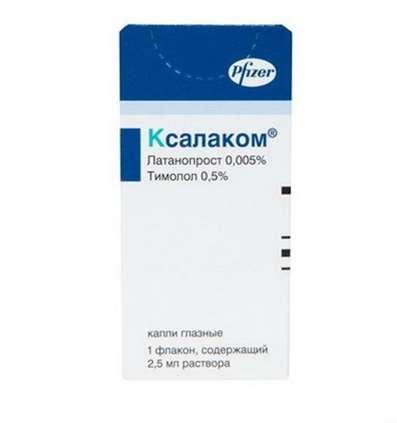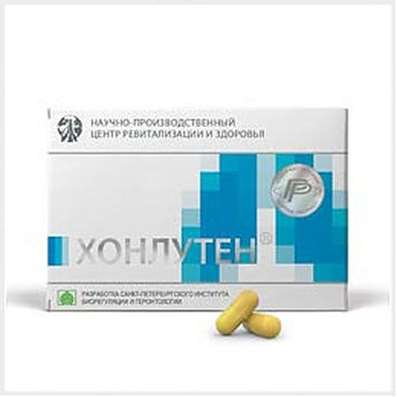Instruction for use: Cymbalta
I want this, give me price
Dosage form: capsules
Active substance: Duloxetine*
ATX
N06AX21 Duloxetine
Pharmacological groups:
Antidepressant [Antidepressants]
The nosological classification (ICD-10)
F32 Depressive episode: Adynamic subdepression; Astheno-adynamic subdepressive states; Asthenoadressive disorder; Astheno-depressive disorder; Asthenodepressive state; Astheno-depressive state; Major Depressive Disorder; Vyaloapatichesky depression with retardation; Double Depression; Depressive pseudodement; Depressive illness; Depressive mood disorder; Depressive disorder; Depressive mood disorder; Depressive state; Depressive disorders; Depressive syndrome; Depressive syndrome larviated; Depressive syndrome in psychoses; Depressed masks; Depression; Depression Depletion; Depression with the phenomena of inhibition within the framework of cyclothymia; Depression is smiling; Involutional depression; Involutionary melancholy; Involutional depression; Manic-depressive disorder; Masked Depression; Melancholic Attack; Neurotic depression; Neurotic depression; Shallow Depression; Organic depression; Organic depressive syndrome; Simple depression; Simple melancholic syndrome; Psychogenic depression; Reactive depression; Reactive depression with moderate psychopathological symptoms; Reactive depressive states; Reactive depression; Recurrent depression; Seasonal depressive syndrome; Severostatic depression; Senile Depression; Symptomatic Depression; Somatogenic depression; Cyclotymic depression; Exogenous depression; Endogenous depression; Endogenous Depressive Conditions; Endogenous Depression; Endogenous depressive syndrome
F33 Recurrent depressive disorder: Major depressive disorder; Secondary depression; Double Depression; Depressive pseudodement; Depressive mood disorder; Depressive disorder; Depressive mood disorder; Depressive state; Depressive syndrome; Depressed masks; Depression; Depression is smiling; Involutional depression; Involutional depression; Masked Depression; Melancholic Attack; Reactive depression; Reactive depression with moderate psychopathological symptoms; Reactive depressive states; Exogenous depression; Endogenous depression; Endogenous Depressive Conditions; Endogenous Depression; Endogenous depressive syndrome
F41.1 Generalized anxiety disorder: Generalized anxiety disorders; Generalized alarm; Phobic neurosis; Anxiety reaction; Anxious neurosis
G63.2 Diabetic polyneuropathy (E10-E14 + with common fourth sign .4): Diabetic neuropathy; Pain in diabetic polyneuropathy; Diabetic neuropathic ulcer of lower extremities; Diabetic Neuropathy; Diabetic polyneuropathy; Diabetic Neuropathy; Peripheral diabetic polyneuropathy; Polyneuropathy diabetic; Sensory-motor diabetic polyneuropathy; Pain in diabetic neuropathy; Diabetic polyneuropathy; Diabetic polyneuritis; Pain syndrome in diabetic neuropathy
M17 Gonarthrosis [knee arthrosis]: Knee osteoarthritis; Gonarthrosis
M54.5 Pain in the lower back: Pain in the lower back; Pain in the lower back; Lumbar pain; Lumbalia; Painful conditions of the spinal column; Back pain; Lower Back Pain Syndrome
M79.1 Myalgia: Myofascial pain syndromes; Pain syndrome in musculo-articular diseases; Pain syndrome in chronic inflammatory diseases of the musculoskeletal system; Pain in the muscles; Tenderness of muscles; Muscle soreness in severe physical exertion; Painful conditions of the musculoskeletal system; Pain in the musculoskeletal system; Pain in the muscles; Pain at rest; Muscle aches; Muscle pain; Musculoskeletal pain; Myalgia; Muscle pain; Muscle pain at rest; Muscle pain; Muscular pain of non-rheumatic origin; Muscle pain of rheumatic origin; Acute muscle pain; Rheumatic pain; Rheumatic pains; Myofascial syndrome; Fibromyalgia
R52.1 Persistent non-recurrent pain: Pain syndrome in oncology practice; Pain syndrome pronounced; Pain syndrome in malignant neoplasms; Pain syndrome in cancer; Pain syndrome with tumors; Pain syndrome in cancer patients; Pain in malignant neoplasms; Pain in malignant tumors; Pain in tumors; Pain in cancer patients; Pain in bone metastases; Pain in cancer; Malignant pain syndrome; Intensive chronic pain; Intensive pain syndrome; Intensive non-curable pain syndrome; Intensive chronic pain syndrome; Unrestrained pain; Unrestrained pain; Tumor pain; Post-traumatic pain syndrome; Severe pain; Chronic pain; Chronic Pain Syndrome
Composition
Capsules - 1 caps.
active substance:
duloxetine hydrochloride equivalent to duloxetine base 30/60 mg
Excipients
contents of the capsule: hypromellose - 11,2 / 22,3 mg; sucrose - 18.1 / 36.2 mg; sugar granulated - 40.6 / 80.9 mg; talc - 23,6 / 47,1 mg, hypromellose acetate succinate - 22,4 / 44,6 mg; triethyl citrate 4.5 / 8.9 mg; dye white (titanium dioxide, hypromellose) - 14.9 / 29.6 mg
capsule shell: indigocarmine 0.11625 / 0.18006 mg; titanium dioxide - 1.77255 / 0.69848 mg; sodium lauryl sulfate - 0.06875 / 0.10763 mg; gelatin - q.s. up to 50/76 mg; ferric iron oxide yellow - - / 0.13449 mg; overprint (for capsule 30 mg) TekPrint ™ green ink SB-4028 - trace amounts; (for capsules 60 mg) TekPrint ™ white ink SB-0007P - trace amounts
Pharmachologic effect
Mode of action - antidepressant.
Dosing and Administration
Inside. Capsules should be swallowed whole, not chewing and crushing. Do not add the drug to food or mix it with liquids. this can damage the enteric coating of pellets.
Depression. The initial and recommended maintenance dose is 60 mg 1 time per day, regardless of food intake.
In clinical studies, an assessment of the safety of doses from 60 to a maximum dose of 120 mg / day was performed. However, there was no clinical evidence that no improvement was seen in patients not responding to the initial recommended dose, with an increase in dose. The response to therapy is usually noted after 2-4 weeks after the start of treatment. To avoid recurrence after reaching the answer to antidepressant therapy, it is recommended to continue treatment for several months. In patients who are positively responding to duloxetine therapy, with repeated cases of depression in the anamnesis, further long-term therapy with a dose of 60 to 120 mg / day is possible.
Generalized anxiety disorder. The recommended initial dose in patients with generalized anxiety disorder is 30 mg / day, regardless of food intake. In patients with insufficient response to therapy, an increase in the dose to 60 mg / day, the usual maintenance dose in most patients, is possible. In patients with concomitant depression, the initial and maintenance dose is 60 mg / day (see also the recommendations above). Clinical studies have shown the effectiveness of doses up to 120 mg / day, in addition, the assessment of such dosages in terms of safety. Therefore, in patients with an insufficient response to a dose of 60 mg, it may be advisable to increase the dose to 90 or 120 mg / day. The dose increase should be based on clinical response and tolerability.
To avoid relapse after reaching a response to therapy, it is recommended to continue treatment for several months.
Painful form of peripheral diabetic neuropathy. The initial and recommended maintenance dose is 60 mg 1 time per day, regardless of food intake. During clinical trials, a safety assessment was also conducted of doses from 60 to a maximum dose of 120 mg / day divided into equal doses.
The concentration of duloxetine in plasma is characterized by considerable individual variability. Therefore, in some patients with an inadequate response to a dose of 60 mg / day, improvements with a higher dose may be noted. Evaluation of response to therapy should be conducted after 2 months. In patients with an insufficient initial response, an improvement in response after a given period of time is unlikely. It is necessary to regularly evaluate the therapeutic effect (at least once every 3 months).
Chronic pain syndrome of the musculoskeletal system (including due to fibromyalgia, chronic pain syndrome in the lower back and osteoarthritis of the knee joint)
Initial treatment. The recommended dose of Simbalta® is 60 mg once a day. Therapy can be started with a dose of 30 mg for 1 week to allow patients to adapt to the drug before increasing the dose to 60 mg once a day. Evidence that higher doses provide an additional benefit are not even available in patients who do not respond to drug therapy at a dose of 60 mg / day. Higher doses are associated with a high incidence of adverse reactions.
Continuation of treatment. The effectiveness of Simbalta® in the treatment of fibromyalgia was demonstrated in placebo-controlled studies of up to 3 months. The efficacy of Simbalta® has not been established in longer-term studies, but the decision to continue treatment should be based on the individual response of the patient.
In patients with renal insufficiency: with Cl creatinine 30-80 ml / min dose adjustment is not required, with Cl creatinine <30 ml / min, the drug is contraindicated.
In patients with impaired liver function: the drug can not be administered to patients with liver disease, leading to liver failure.
Age. Elderly patients for the treatment of generalized anxiety disorder are recommended an initial dose of 30 mg for 2 weeks before starting duloxetine at a target dose of 60 mg / day. In the future, the use of the drug in a dose of more than 60 mg / day to achieve a good result. A systematic evaluation of the drug intake in a dose exceeding 120 mg / day was not carried out. When duloxetine is used for other indications, dosage adjustment according to age is not required.
Recommended use of the drug in patients ≥18 years of age. Duloxetine is not recommended for children under 18 years of age due to a lack of data on its safety and effectiveness of this age group of patients.
Abrupt cancellation of therapy should be avoided. When discontinuing duloxetine treatment, the dose should be gradually reduced within 1-2 weeks in order to reduce the risk of withdrawal syndrome. If after the dose reduction or after the cessation of treatment the expressed symptoms of the "withdrawal" syndrome appear, then continuation of the administration of the previously prescribed dose may be considered. Subsequently, the doctor may continue to reduce the dose, but even more gradually.
Release form
Capsules intestinal soluble 30 mg or 60 mg. For 14 caps. in the blister pack. By 1, 2 or 6 bl. in a pack of cardboard.
Conditions of leave from pharmacies
On prescription.
Storage conditions for Cymbalta
At a temperature of 15-30 ° C.
Keep out of the reach of children.
Shelf life of Cymbalta
3 years.
Do not use after the expiry date printed on the package.

 Cart
Cart





